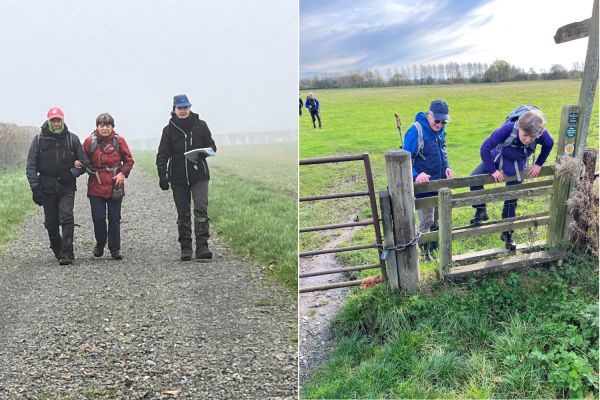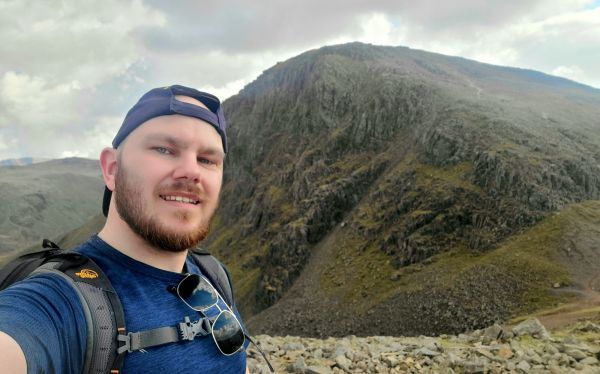Navigating paths as a visually-impaired child
8-year-old Samuel and his father Ed share their experiences of using public paths

My name is Ed and I live in southwest London with my wife Karen and our children: Patrick who is 16, Poppy, who is 14 and Samuel, who is eight. Whilst we live on the urban fringe, we can be in the countryside in just a five-minute walk.
Samuel has a rare genetic condition called oculocutaneous albinism (OCA). He is registered visually impaired, and his eyesight may get worse with age. Samuel wears very strong glasses, is long sighted and has little 3D perception. He also has photophobia which means he needs to wear dark glasses even indoors. Bright light isn’t just painful for him, but it renders him pretty much blind. He uses a cane to get around and he often walks into things or trips over things.
The importance of walking
All the statistics show that people with a vision impairment aren’t as active as people with normal sight. But despite the challenges walking is really important to Samuel. He’ll never be able to drive and cycling on busy roads would be really dangerous as he would struggle to see the cars and any bumps in the road. So walking is going to be the key way that he’ll get around in life.
Challenges of countryside paths
Walking along countryside paths can be challenging. In the summer, brambles can grow across the path and if they aren’t cut back by the local authority they can be a real hazard because Samuel can’t see them. Often, you'll see him walking with his arm curled around his face, protecting himself.
Tree roots are a trip hazard that Samuel won’t see and he can’t spot barbed wire or how muddy the paths are. So we tend to stick to paths that he knows and where we know that the footpath quality is pretty good. Stiles are a nightmare because Samuel has no depth perception so getting over a stile is really tricky. Steps on a pathway can also be a problem. If the steps are a regular height and depth it's okay. But if they are built in ad hoc positions and at different heights, it is really difficult for Samuel to judge them.
The need for more accessible public paths
I’d like people to give greater consideration to how accessible public paths are. I’d like people to think about whether the path is wide enough so that you can walk alongside someone comfortably so you can guide them if it’s needed. I’d like to see paths better maintained and kept free from obstructions. Something that can feel like a minor inconvenience to us, can be a big barrier to a visually impaired person.
Legally everyone in England and Wales has the right to walk on public paths but the reality is that not all paths are accessible to everyone. It’s only when you have walked a path with someone who has a disability that you truly understand the issues they face.

Samuel’s story
I'm Samuel, I'm eight years old and I'm visually impaired. But that doesn't stop me from doing things. When I go out for a walk I use my cane. It's like a stick with a ball on the end and when there's an obstacle or something high, the cane just stops so I don’t trip over. I also take Rosie, my buddy dog. I like to go for walks as it stretches my legs. I like to play and I like that there’s lots of nature and flowers which makes me feel happy.
Things that make walks difficult for me are if the path is bumpy. That can make me trip over and graze myself. I also have to look out for tree roots, twigs and holes in the ground. I can get stung by nettles or hit by brambles. But I don’t let that stop me.

Walking is about more than what you can see
Ramblers member Marika has been blind since childhood, but that hasn’t stopped her from enjoying walking.

Challenging perceptions of the Ramblers
Arron, the chair of Fillyaboots Merseyside Young Walkers talks about being a young, LGBT+, working class Rambler.

Passing on the love of walking through the generations
Daniel’s grandparents inspired in him a love of walking which he is in turn passing on to his young daughter.